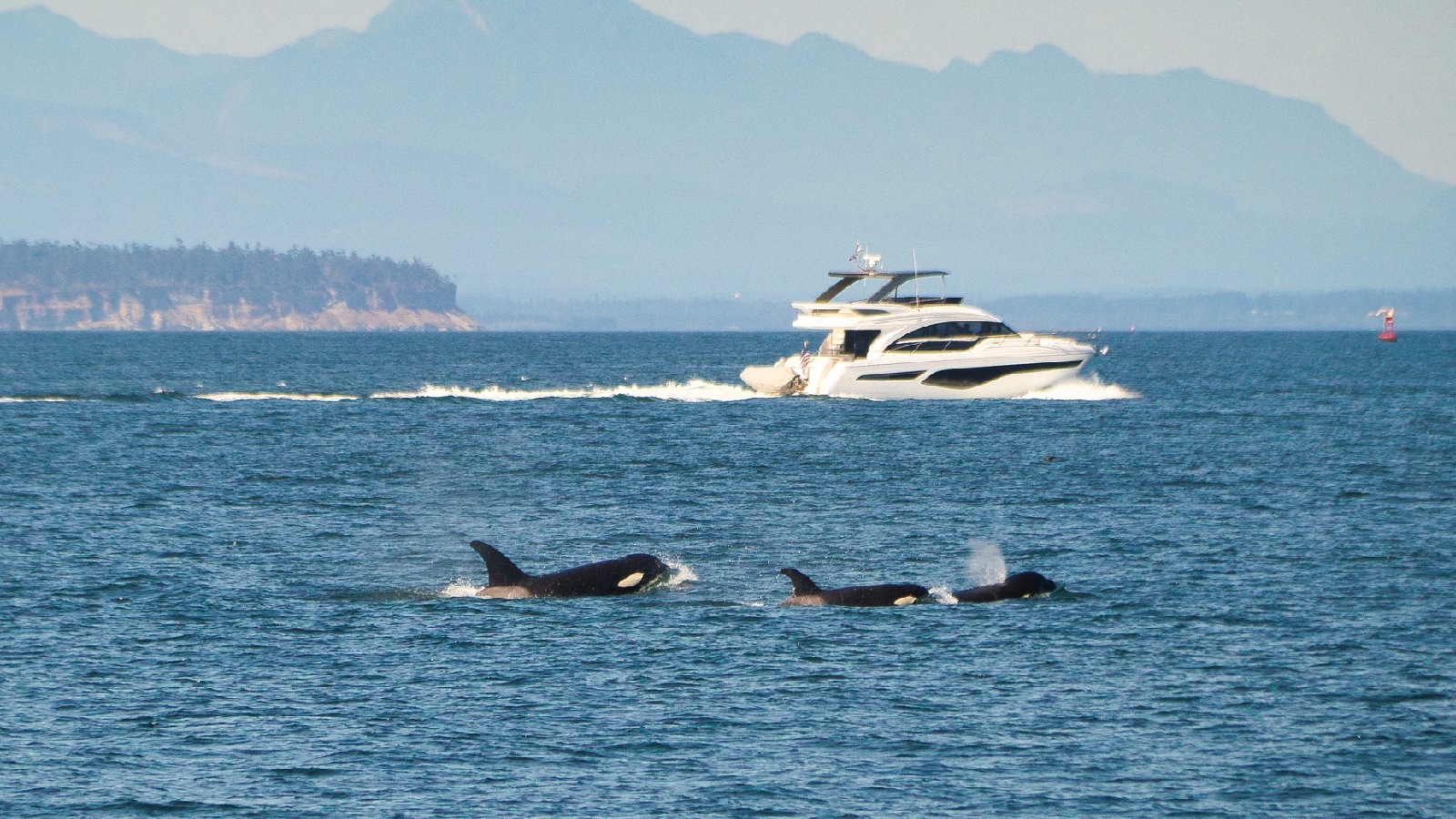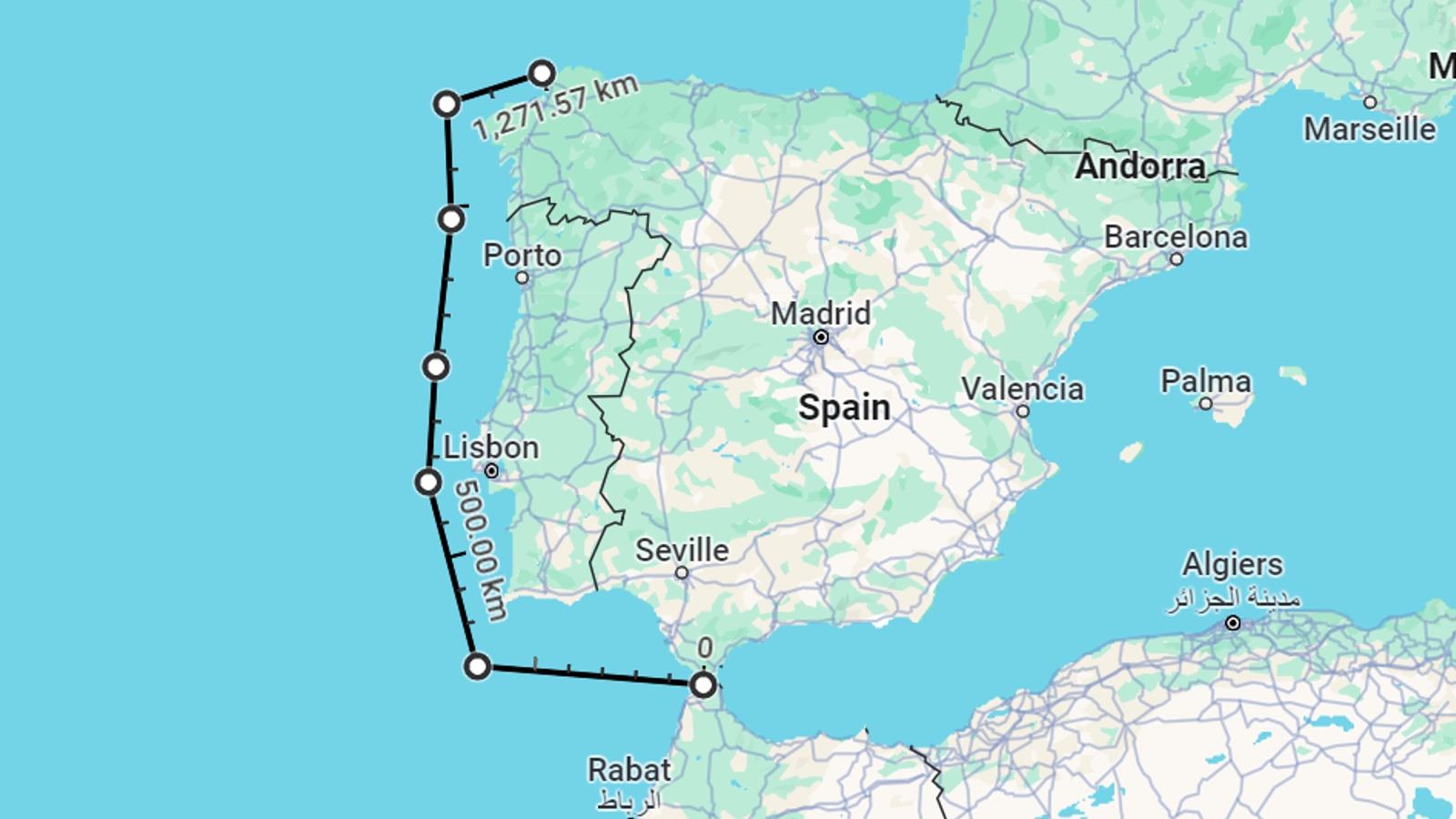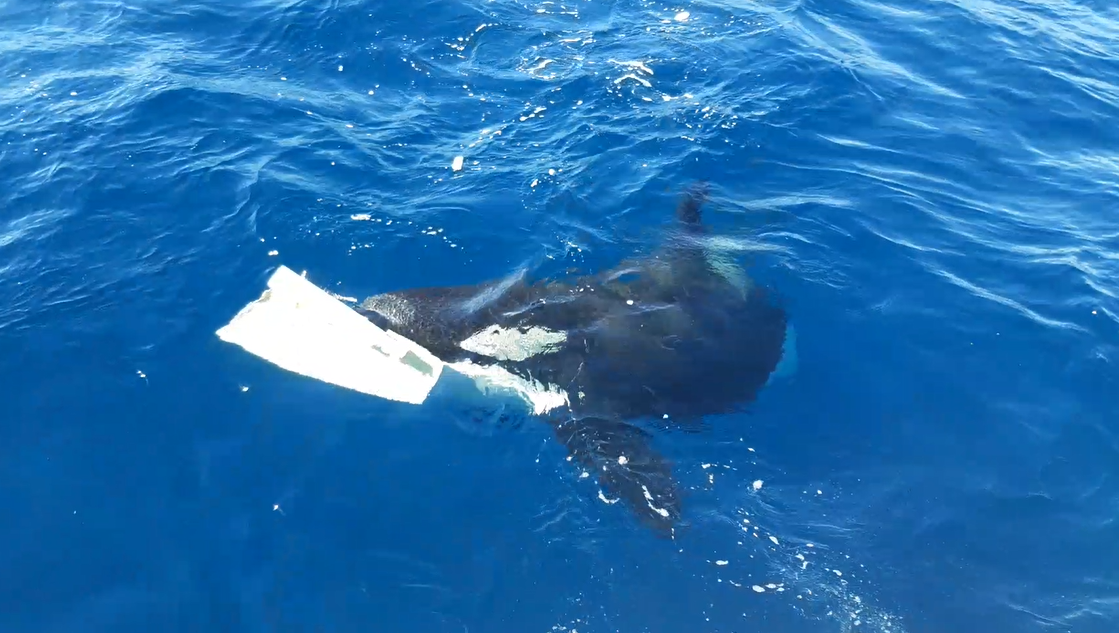Infamous boat-sinking orcas spotted hundreds of miles from where they should be, baffling scientists
Orcas that attack and sink boats in southwestern Europe have been spotted circling a vessel in Spain, hundreds of miles from where they should currently be. And scientists can't explain why.

Orcas that have been terrorizing boats in southwest Europe since 2020 were recently spotted circling a vessel in Spain for the first time this year. The close encounter, which took place hundreds of miles from where the cetaceans should currently be, hints that this group is switching up its tactics — and scientists have no idea why.
The Iberian subpopulation of orcas (Orcinus orca) is a small group of around 40 individuals that lives off the coast of Spain and Portugal, as well as in the Strait of Gibraltar — a narrow body of water between southern Spain and North Africa that separates the Atlantic Ocean and Mediterranean Sea.
Since 2020, individuals from this group have been approaching and occasionally attacking boats, sometimes causing serious damage to the vessels and even sinking them. The most recent sinking occurred on Oct. 31, 2023, but the orcas have sent at least three other boats to the bottom of the sea. However, no humans have been injured or killed.
Related: Orcas are learning terrifying new behaviors. Are they getting smarter?
On April 10, three of these orcas were spotted persistently swimming near a large yacht off the coast of Malpica in Galicia, northern Spain, local news site Diario de Pontevedra reported. The trio did not attack the vessel, but local conservation group Orca Ibérica GTOA, which has been closely monitoring the Iberian subpopulation, warned boaters to "take caution when passing through" the area.
The encounter was surprising as the orcas don't normally venture this far north until mid to late summer, Spanish science news site gCiencia reported.
"Theoretically, they are in the Strait [of Gibraltar] in the spring and should reach the north [of Spain] at the end of the summer," Alfredo López Fernandez, a biologist at the University of Aveiro in Portugal and representative of the Atlantic Orca Working Group, told gCiencia in the translated article. "There is an absolute lack of knowledge" about why this is happening, he added.
Sign up for the Live Science daily newsletter now
Get the world’s most fascinating discoveries delivered straight to your inbox.

Other orcas have also been spotted further east along the Spanish coastline toward Biscay and further south in Portuguese waters over the last few weeks, gCiencia reported. The orcas normally only enter these areas to follow tuna, their preferred prey. It is unclear if the tuna have arrived early this year.
So far, the orcas have not attacked any boats. But López Fernandez believes this could start within the next few months. However, he says it is hard to predict when and where these encounters will occur.
Scientists still don't know exactly why these attacks started. Some researchers believe that the first attacks may have been perpetrated by a lone female named "White Gladis," who may have been pregnant when she started harassing the boats. But regardless of how it started, the behavior quickly spread among the group.
So far, at least 16 different individuals have attacked boats. Eyewitnesses also claim to have seen orcas teaching other individuals how to attack boats, with an emphasis on attacking vessels' rudders to immobilize them.

There is also a suggestion that the behavior may have spread outside the population after a boat in Scotland was attacked by a different group in June 2023. However, it is impossible to prove this attack was connected to the others.
As the number of attacks has increased, boat owners have started using firecrackers and even guns to scare off the orcas, gCiencia reported. However, scientists like López Fernandez have urged for restraint because the subpopulation is "in danger of extinction."
"We want to transmit real and truthful information," López Fernandez said. "We're not going to hide that the orcas can touch the boats and sometimes break something, but we also have to be aware that what we have in front of us is not a monster."

Harry is a U.K.-based senior staff writer at Live Science. He studied marine biology at the University of Exeter before training to become a journalist. He covers a wide range of topics including space exploration, planetary science, space weather, climate change, animal behavior and paleontology. His recent work on the solar maximum won "best space submission" at the 2024 Aerospace Media Awards and was shortlisted in the "top scoop" category at the NCTJ Awards for Excellence in 2023. He also writes Live Science's weekly Earth from space series.










